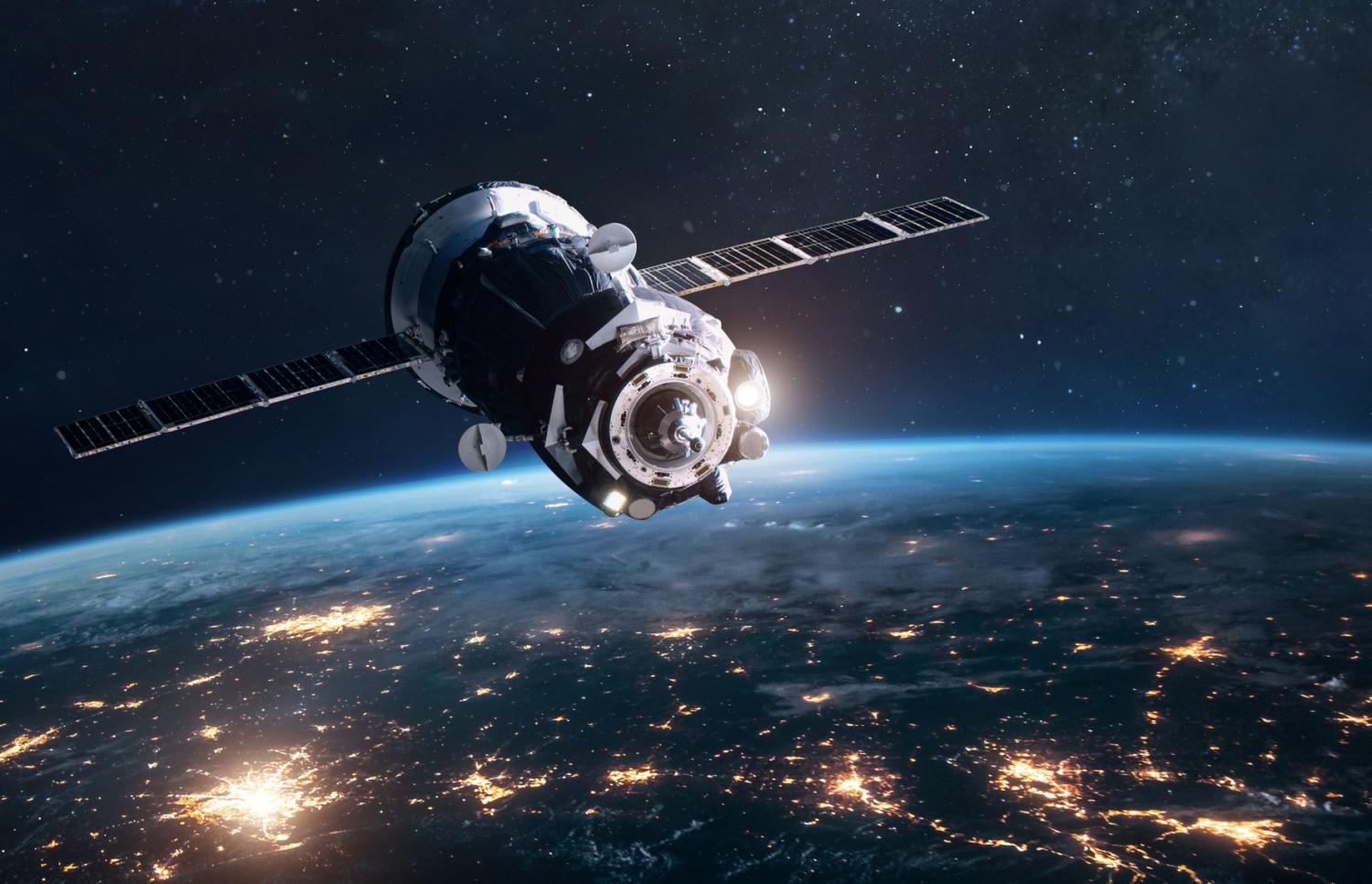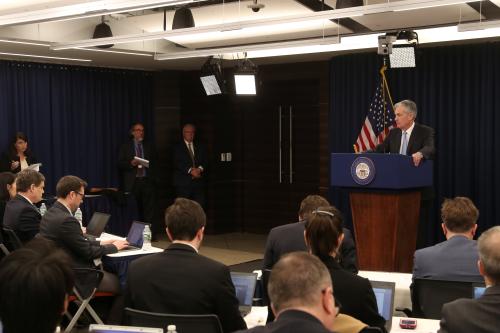For much of the last century, space activity was defined almost entirely by governments, pursued through programs that emphasized scientific discovery, national defense, and international prestige. Over time, however, the landscape has shifted. Advances in launch technology, satellite design, and digital infrastructure have lowered costs and opened opportunities for commercial actors. Private firms are now central to areas ranging from communications satellites to emerging markets such as space tourism. Alongside these new participants, the objectives of space activity have also broadened. Exploration and security remain important, but they now operate alongside market-driven goals like expanding broadband access, improving navigation, and enhancing Earth observation. These changes have pushed economists and policymakers to reconsider how space is classified and governed, increasingly viewing it as a distinct economic domain, marked by its own set of actors, institutions, and dynamics.
Understanding this transition is critical, as space activity now influences a wide range of terrestrial systems, from internet access and logistics to emergency response and financial infrastructure. Commercial space has become a site of economic activity and strategic planning, prompting governments to reassess their regulatory approaches, public investments, and long-term infrastructure needs. In August 2025, President Trump signed an executive order aimed at accelerating commercial space development through streamlined environmental reviews, revised launch regulations, and coordinated oversight of spaceport infrastructure. The order also created a new role within the Federal Aviation Administration (FAA), an associate administrator for commercial space transportation, tasked with advancing innovation and regulatory reform, reinforcing space as a priority for economic competitiveness, and signaling a more deliberate alignment of regulatory tools to support the emerging space economy.
This paper describes the changing space economy across five dimensions: (1) direct and spillover economic benefits; (2) shifting organizational structures and incentives; (3) governance challenges in managing shared orbital environments; (4) national infrastructure and capability gaps; and (5) the evolving role of startups and state-level ecosystems. These sections explore how public and private stakeholders jointly shape outcomes in the space sector and how these patterns affect broader questions of economic development, innovation, and institutional design.
Together, these trends raise a set of emerging policy considerations. As the commercial space sector grows in scale and complexity, there is increasing need for updated frameworks to manage shared risks, align investment, and ensure access to essential space-based services. Recent federal actions point to a more active role in supporting private sector growth. Going forward, additional efforts may be needed to strengthen interoperability, support sustainable infrastructure, and address coordination challenges across both public and private domains.
Economic benefits: Direct, spillover, and beyond
Direct benefits
As space-based industries have become more integrated into the economy, its projected commercial value has risen sharply. Estimates indicate that the global space economy could grow from $630 billion in 2023 to $1.8 trillion by 2035, an average annual growth rate of around 9%, which is well above the global GDP growth rate. Most of this expansion is expected to come from satellite-enabled services, including communications, positioning, and Earth observation. Even under more conservative assumptions, where space access improves gradually and ground-based substitutes remain competitive, McKinsey estimates the sector could reach $1.4 trillion by 2035.
More recently, some economists have revisited space not simply as a high-growth sector but as a potential instrument for broader macroeconomic policy. Targeted increases in public investment have been suggested as a tool to counteract secular stagnation, especially during periods of persistently weak demand. Estimates suggest that restoring space investment to Cold War-era levels could inject $1.5 to $3 trillion into the U.S. economy over twenty years (Weinzierl 2023). In this framing, the fiscal impulse supports short-run demand while the innovation spillovers promote long-term supply-side gains, which offers a rare dual lever for growth. The short-run demand boost stems from the sheer scale of required infrastructure investment: Expanding economic activity in space involves capital-intensive projects such as launch systems, orbital manufacturing, space-based power, and eventually off-Earth settlements. These investments can total trillions of dollars over two decades, directly stimulating aggregate demand. On the supply side, the gains come from space’s frontier characteristics like its capacity to drive innovation through extreme constraints, attract entrepreneurial risk-taking, and generate spillovers into Earth-based productivity. Combined, these features offer a rare alignment of conditions that can simultaneously push demand and expand the economy’s productive capacity.
Understanding where growth actually shows up requires looking beneath aggregate averages. Using quality-adjusted price indexes, recent analysis by Highfill and Weinzierl (2024) finds that between 2012 and 2021 real gains were concentrated in manufacturing, with output rising about 3.9% per year and value added about 7%, largely due to falling prices and improving quality in satellites and launch technology. Over the same period, the information segment, still dominated by direct-to-home satellite television, declined in real terms because prices rose while quality stagnated. Since slower-growing legacy segments continue to occupy a large share of industry activity, they dampen the overall average even when frontier segments are advancing quickly. Disaggregating performance in this way clarifies where productivity is improving and where contributions remain limited, which is crucial for targeting investment and policy support.
Connectivity shows how these dynamics translate into everyday value while also revealing the conditions that govern adoption. Low-Earth-orbit satellite constellations now provide high-speed, lower latency internet access to remote communities, making smart phones more useful to the general public. In New Zealand, more than 14% of rural broadband users already rely on satellite service, and mobile operators such as One NZ and 2degrees have partnered with SpaceX and Lynk to enable satellite texting on ordinary phones. These space-based communications networks also strengthen resilience during natural disasters, keeping basic communication available when towers and fiber are damaged by floods or wildfires.
The binding constraint to internet access in remote parts of the world is affordability. According to estimates from Croshier (2022), in lower income settings, some internet access options require purchasing expensive equipment, costing nearly $1,885, and paying for monthly plans that range from about $232 to $13,779, depending on speed and reliability. These high costs limited internet access to institutions with urgent needs or ample budgets. An MIT study’s cross-country estimate suggests that today’s price point is affordable for roughly 15% of the under connected population across 37 countries, yet projected cost declines could lift affordability to as much as 60% over the next decade (Del Portillo et al. 2021). Expansion will depend on lowering device and service costs, coordinating networks and spectrum, and integrating satellite capacity with terrestrial infrastructure so that coverage improves at scale rather than remaining concentrated.
Spillover benefits
Beyond direct economic returns, space activity has generated a growing set of spillover benefits across other sectors. Satellite infrastructure now supports everything from logistics and agriculture to media, defense, and consumer services. GPS networks help coordinate transportation and delivery, while Earth observation tools assist in crop monitoring and disaster response. In particular, satellites have played a growing role in disaster preparedness and emergency communication, offering critical services during hurricanes, earthquakes, and other natural events when terrestrial infrastructure is disrupted. Communications satellites alone make up a large part of the space economy, yet their downstream impact is much broader.
Spillovers arise both from shared infrastructure, like access to AWS ground station for antennas and receivers, and from mission driven innovations, like maps software and mobile phone SOS features, that later migrate to civilian use. Shared infrastructure can lower the cost of privately owning a satellite by providing access to routing, timing, monitoring, and emergency coordination services. At the same time, manned space missions led to innovations in life support, remote operations, autonomy, reliability, and lightweight design that now appear on Earth, according to a report by the International Space Exploration Coordination Group (ISECG). These Earth-based adaptations include water purification systems, implantable heart monitors, improved solar panels, advanced robotics, lightweight materials, and compact ultrasound devices used in telemedicine. These outcomes were often not the original targets but rather solutions to unfamiliar problems in space that later matched needs in health care, environmental management, and industrial design.
As opposed to the more expansive spillover activity seen in recent years, historical initiatives show that benefits did not always scale or diffuse widely. According to Kantor and Whalley (2024), county-level evidence on NASA’s R&D in the 1960s and 1970s indicates that employment, output, and investment rose, but gains clustered in counties with high space capability anchored by existing aerospace and defense industries, with limited effects beyond that core. Even in high recipient places, lasting productivity growth and innovation in unrelated sectors did not follow, and funding mostly reinforced regions already well positioned. The aggregate record moves in the same direction, with estimated macro spillovers lifting real GDP by about 2.2% on average across two decades during the late 1960s through early 1980s when public funding peaked, then dropping to about 0.9% in later years with similar activity but lower public investment and more outsourcing to private industry, according to research by Corrado et al. (2023). Taken together, the historical evidence suggests that large scale public space R&D and procurement efforts such as Apollo-era spending did not by themselves reliably produce broad or durable spillovers. It remains uncertain whether comparable effects can be reproduced today, which argues for closer attention to regional capabilities, sectoral structure, and the composition and persistence of public spending.
Beyond
Alongside its commercial potential, space also contributes to goals that are not easily measured in standard economic metrics. One example is education. More than two million teachers and 43 million students across 49 countries have taken part in activities linked to the International Space Station, including classroom collaborations and student-designed experiments. In doing so, they strengthen the foundation for future scientific and technical capacity. Cultural narratives around space also contribute to broader national identity and public vision. Space exploration is said to offer “a unique and evolving perspective on humanity’s place in the Universe” (ISECG 2013), prompting reflection on fundamental questions about a future of human presence beyond Earth. This symbolic value, though intangible and often hard to capture, influences national priorities and collective identity, which adds yet another dimension to understanding space’s broader impact.
Space activity also carries powerful non-economic value as a tool of national defense and global positioning. From the start of the Space Age in 1957, military needs were a core driver of investment, and Cold War programs were built around geopolitical and military objectives rather than economics. That legacy is visible in the origins of key technologies. Launch systems, high resolution imaging, and global navigation satellite systems grew out of defense programs and later migrated to civilian use. GPS began in the U.S. Department of Defense and now underpins everyday services, while remote sensing started in classified surveillance and now supports public safety and scientific research.
Even when economic returns are not the main goal, space still reflects national strength, security, and global presence, showing that its value goes far beyond markets alone.
Shifting incentives and organization changes
As activity in space has expanded, the web of institutions around it has grown more complex. NASA and other public agencies no longer dominate end-to-end mission design, funding, and execution; instead, a wider mix of public and private organizations now shape outcomes under newer incentive structures and governance models. A turning point came in the mid-2000s, when NASA pivoted from its long-standing reliance on cost-plus arrangements and instead moved toward fixed-price contracting, while redefining its role from “oversight” to what it called “insight.” This reorientation gave firms more discretion in how they executed projects, driving down costs and encouraging efficiency gains. At the same time, which signaled to suppliers that technologies should be designed with broader commercial applicability in mind. This shift opened the door for new entrants, most prominently SpaceX, and helped to reshape the incentive structure of the sector.
One institutional form that advances this shift is the Public-Private Research and Development Partnership (PPRDP). These arrangements operationalize the “one customer among many” approach by setting shared targets, clarifying roles across agencies, research institutions, and firms, and creating channels for data and expertise to move. These partnerships, as research suggests, not only reduce duplicative effort but also enhance knowledge diffusion and de-risk early-stage innovation by aligning the incentives of government agencies, research institutions, and private firms. Alongside these formal partnerships, changes in the underlying cost structure of space access are also reshaping institutional roles. Terzi & Nicoli (2023) characterize the current period as the “New Space” era, defined by falling entry costs and reduced “trade frictions” in space (in other words, launch costs). These trends have opened the door to previously unviable activities such as microgravity manufacturing, orbital tourism, and space-based solar power. Such developments reflect not just technological change but a broader reconfiguration of space activity, as lower costs have enabled new entrants and commercial ventures to take on roles previously reserved for state-led missions.
While commercial involvement has reshaped many institutional roles, international collaboration has also taken on greater significance. Cross-border partnerships now complement public-private efforts, expanding the network of actors involved in space activity. One example of this involvement comes from the International Space Station, which has brought together over 26 countries in a long-term cooperative effort—a platform that is framed as both scientific and a model for diplomatic coordination.
Macauley (2005) adds another institutional layer by examining the role of prizes in space innovation. Unlike subsidies or grants, prizes pay only upon success, lowering public exposure while incentivizing high-risk experimentation. She suggests that prizes can be a valuable complement to traditional contracting mechanisms, especially when the public sector seeks to shift financial and technical risks away from itself while still stimulating innovative activity.
For economists, this changing landscape may offer a way to reconsider how emerging sectors are shaped by their organizational structures and how different approaches might support innovation as the space economy matures.
While the institutional transition has enabled new activity, it has also raised concerns about how shared resources are managed and who is responsible when problems arise.
One example is the legal baseline created by the 1967 Outer Space Treaty, which prohibits national appropriation of outer space and leaves no framework for enforceable property rights. In practice this ambiguity complicates allocation, stewardship, and liability in low Earth orbit, where satellite activity is expanding quickly. Without clearly defined rights or responsibilities it is difficult to assign liability for collisions or to manage congestion, which produces collective action failures. Firms may therefore rationally underinvest in preventive measures even as aggregate collision risk and operational disruption rise and the long-term sustainability of low Earth orbit becomes more uncertain.
These ambiguities shape routine operating choices, including how much to invest in prevention and space cleanup. In the context of space debris mitigation, for instance, expected losses from collisions across the commercial sector in low Earth orbit are roughly $28 to 33 million dollars per year, while active debris removal can exceed $1 million dollars per kilogram. When private costs are large and private benefits are widely shared, firms will not fund mitigation at the level that is efficient for the system as a whole. Underinvestment follows even as aggregate risk increases, which points toward coordinated remedies through regulation, public funding, or joint governance arrangements that spread costs and align incentives.
Incentive misalignment also interacts with market structure. Activity in space tends to concentrate in a small number of firms Ambiguous rights and the absence of a central authority to set and enforce standards make coordination difficult. Together, these conditions create a governance gap in which commercial activity can scale faster than the norms needed to manage congestion and long-term sustainability. Closing that gap requires institutions that tie private payoffs to system-wide safety and that provide clear authority to implement and enforce agreed-upon standards.
National infrastructure and other considerations
The governance challenges described above are compounded by gaps in the physical and organizational infrastructure required to sustain the space economy.
On the public side, for instance, the International Space Station (ISS)—managed by the Center for the Advancement of Science in Space (CASIS)—was established to translate microgravity access into sustained scientific and commercial activity; however, a NASA Inspector General audit found that only about 73% of available research hours were used despite substantial funding and that non-NASA support remained limited, calling into question whether joint research platforms are generating the commercial momentum often anticipated (Rausser et al. 2023).
Comparable vulnerabilities are visible on the private side. As James Pethokoukis highlights, SpaceX’s recent Starship explosion destroyed essential testing equipment and paused operations for months, delaying the firm’s development schedule and pushing back NASA’s Artemis milestones that rely on Starship capabilities. Considered together, underused public capacity and concentrated private test assets create similar system-level risks, where shortfalls in utilization and resilience can propagate delays across interdependent commercial and public programs. Addressing these risks requires tighter coordination with users, reliable pathways for external participation, and greater redundancy in launch and test infrastructure so that progress can continue despite localized failures and outages.
While incidents like CASIS and Starship expose short-term vulnerabilities, they also reflect the structural difficulty of building viable space business models without progress across multiple technologies. The success of New Space ventures often hinges on the co-development of complementary capabilities, including affordable, frequent launches; in-orbit production; scalable living environments; resource extraction and energy collection; and protections against radiation and debris. Taken alone, each element offers only limited economic return. But when advanced together, they have the potential to reinforce one another and generate a durable, self-sustaining commercial ecosystem with substantial long-run profit opportunities (Weinzierl 2018). In this sense, the value of any single technology is contingent on progress in others, and without parallel investment across several domains the broader space economy risks stagnating before it achieves sustainability. Similar to physical infrastructure, every driver of the space economy, from governments and space firms to non-space industries, has a role to play in building up the industry.
Priority areas for collective involvement include standardization and harmonization, accessibility and usability, and awareness and education. As space technologies spread into more sectors, cross-industry engagement and collaboration is becoming just as important as building the systems themselves. Beyond coordination gaps and technical risks, structural limitations in how space systems are built and financed further constrain progress. For example, most launch vehicles and satellites are made as one-off designs for single use, which blocks the economies of scale that help bring down costs in other industries. This keeps prices high and slows growth, limiting both capacity and affordability. On top of this, investors are often reluctant to back such capital-heavy, high-risk projects, especially when development stretches over long timelines with uncertain returns. Without more scalable production models or easier access to early financing, many space companies remain stuck in pilot phases, struggling to move beyond demonstration and into sustainable operations.
The emerging start-up ecosystem
These financing and structural barriers are especially acute for start-ups, whose role in the space economy has grown more visible as infrastructure improves and launch access becomes more affordable. Many of these firms operate with smaller teams, leaner operations, and a greater willingness to take on technical and financial risks. While some are focused on building satellites or launch capabilities, others concentrate on leveraging space infrastructure for real-world uses, including space tourism, orbital debris removal, or high-resolution imaging and sensing technologies.
Start-up momentum is not entirely new. In the mid-1990s, surging commercial interest prompted a wave of private launch firms, following projections that the market for satellite deployment would expand dramatically. Commercial revenues overtook public space budgets for the first time in 1996, and optimism about private launch capabilities led some advocates to call for the government to step back entirely. Yet by the early 2000s, few of those firms had succeeded. High-profile failures like the Iridium Corporation reduced investor confidence, and many of the same companies that had rejected government involvement began seeking NASA and military funding to stay afloat. These dynamics are likewise echoed in the current era of commercial spaceflight. Many of today’s space start-ups diverge from typical venture-backed models. Lacking billionaire investors, they instead rely on public contracts, modest private investment, and alternative financing like crowdfunding or partnerships with universities, according to Gurtuna (2013). Firms such as Copenhagen Suborbitals, funded entirely through private donations, illustrate this path. Operating with small teams and narrow mission scopes, these start-ups are often more willing to accept risk and innovate outside the constraints of traditional aerospace development.
Even with cheaper launches and broader infrastructure, progress can be uneven across the value chain. Emerging areas like in-orbit servicing, space tourism, and lunar applications face long development timelines and uncertain revenue models. Private investors remain cautious in these segments. The core policy need is to reduce transaction costs and coordinate investment across technical and geographic gaps. A useful precedent from outside space may be the Bayh-Dole framework (Kenney and Patton 2009). Allowing federally funded institutions to retain intellectual property rights enabled licensing, venture formation, and durable tech-transfer capacity. That shift helped create more than 11,000 startups and built a support system of offices and partnerships that moved research into use. Rausser et al. (2023) argue that similar tools in space can shorten the path from proof of concept to product.
Policy implications
As space becomes more economically integrated and commercially dynamic, the policies that govern it must adapt accordingly. The evidence presented in this paper highlights a number of areas where policy can play a role, not only in accelerating innovation but in ensuring that the long-run benefits of space activity are widely distributed, resilient, and strategically aligned.
Recent actions, such as the August 2025 executive order on commercial space development, reflect an ongoing federal effort to streamline regulation, promote infrastructure expansion, and reduce administrative friction for private firms. While such efforts aim to ease barriers to entry and improve coordination, their impact may be strongest when combined with broader strategies that support institutional alignment, shared resource governance, and long-term infrastructure development.
Public agencies can continue to lead by investing in foundational capabilities, such as spaceports, research platforms, and shared technical standards that make it easier for different systems to operate together, allowing private actors to scale more efficiently. For example, the “One Big Beautiful Bill Act” reclassified spaceports as similar to airports, allowing them to qualify for tax-exempt bond financing, which may spur the development of more spaceports and related infrastructure. Similarly, policies that support early-stage innovation, reduce geographic disparities, and encourage industry-university collaboration can help expand access to the space economy beyond a handful of firms or regions.
Equally important is workforce development. As this paper shows, space activity now intersects with sectors ranging from agriculture to finance to climate resilience. Building a talent pipeline that reflects this complexity will require not only traditional STEM training but also new cross-disciplinary programs that prepare workers to operate at the intersection of space and terrestrial systems. Policymakers might therefore consider expanding federal grants for universities and community colleges to create programs that combine STEM training with policy, business, and environmental studies (or any other fields relevant to space). To ensure engagement, eligibility for these grants could be tied to partnerships with industry or federal agencies working on space-related projects.
Existing programs such as the Workforce Innovation and Opportunity Act (WIOA) exemplify how federal resources can be directed toward emerging industries like the space sector. WIOA is sector-agnostic, meaning it does not limit funds to specific industries. If space-related training programs are listed on a state’s Eligible Training Provider List (ETPL) and serve as “in-demand” occupations, they can be supported through Individual Training Accounts, apprenticeships, on-the-job training, or contracts. Washington State, for example, notes aerospace training as an eligible discretionary use of WIOA funds, exemplifying how states can make use of these resources in growing sectors like space.
Looking ahead, the central policy task is less about expanding activity for its own sake and more about ensuring that growth remains coordinated, sustainable, and broadly beneficial. This will mean embedding standards and governance frameworks early, strengthening partnerships across public and private actors, and building the institutional capacity to manage shared risks.
-
References
Corrado, Luisa, Maureen Cropper, and Akhil Rao. 2023. “Space Exploration and Economic Growth: New Issues and Horizons.” Proceedings of the National Academy of Sciences 120 (43): e2221341120. https://doi.org/10.1073/pnas.2221341120.
Croshier, Rose. 2022. “Space and Development: Preparing for Affordable Space-Based Telecommunications.” Center for Global Development. https://www.jstor.org/stable/resrep58384.
Del Portillo, Inigo, Skylar Eiskowitz, Edward F. Crawley, and Bruce G. Cameron. 2021. “Connecting the Other Half: Exploring Options for the 50% of the Population Unconnected to the Internet.” Telecommunications Policy 45 (3): 102092. https://doi.org/10.1016/j.telpol.2020.102092.
Gurtuna, Ozgur. 2013. Fundamentals of Space Business and Economics. Springer Briefs in Space Development. New York: Springer. https://link.springer.com/book/10.1007/978-1-4614-6696-3.
Highfill, Tina, and Matthew Weinzierl. 2024. “Real Growth in Space Manufacturing Output Substantially Exceeds Growth in the Overall Space Economy.” Acta Astronautica 219 (June): 236–42. https://doi.org/10.1016/j.actaastro.2024.03.020.
ISECG. 2013. “Benefits Stemming from Space Exploration.” https://www.globalspaceexploration.org/?p=497.
Kantor, Shawn, and Alexander T. Whalley. 2023. “Moonshot: Public R&D and Growth.” Working Paper. Working Paper Series. National Bureau of Economic Research. https://doi.org/10.3386/w31471.
Kenney, Martin, and Donald Patton. 2009. “Reconsidering the Bayh-Dole Act and the Current University Invention Ownership Model.” Research Policy 38 (9): 1407–22. https://doi.org/10.1016/j.respol.2009.07.007.
Macauley, Molly K. 2005. “Advantages and Disadvantages of Prizes in a Portfolio of Financial Incentives for Space Activities.” Space Policy 21 (2): 121–28. https://doi.org/10.1016/j.spacepol.2005.02.004.
Rausser, Gordon, Elliot Choi, and Alexandre Bayen. 2023. “Public–Private Partnerships in Fostering Outer Space Innovations.” Proceedings of the National Academy of Sciences 120 (43): e2222013120. https://doi.org/10.1073/pnas.2222013120.
Terzi, Alessio, and Francesco Nicoli. 2024. Space Possibilities for Our Grandchildren: Current and Future Economic Uses of Space. LU: Publications Office. https://data.europa.eu/doi/10.2765/392340.
Weinzierl, Matthew. 2018. “Space, the Final Economic Frontier.” Journal of Economic Perspectives 32 (2): 173–92. https://doi.org/10.1257/jep.32.2.173.
Weinzierl, Matthew. 2023. “Expanding Economic Activity in Space May Offer a Solution to Secular Stagnation.” Proceedings of the National Academy of Sciences 120 (43): e2221347120. https://doi.org/10.1073/pnas.2221347120.
The Brookings Institution is committed to quality, independence, and impact.
We are supported by a diverse array of funders. In line with our values and policies, each Brookings publication represents the sole views of its author(s).










